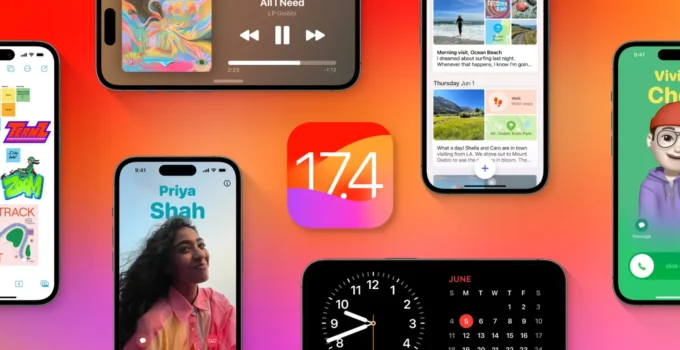iOS 17.4 Update to Enhance User Control Over Video Call Reactions. In the digital age where video calling has become a staple of communication, Apple’s introduction of “Reactions” in iOS 17, iPadOS 17, and macOS Sonoma brought a novel way to express emotions during calls. These Reactions, activated by specific hand gestures, include a variety of visual effects such as hearts, thumbs up/down, balloons, rain, confetti, lasers, and fireworks. Designed to mirror the user’s mood and add a layer of interactivity to video chats, these features cater to the growing demand for more expressive and dynamic online communication methods.
iPhone 16 to Introduce Capture Button, Merging DSLR Precision with Smartphone Photography
Despite their intended purpose to enrich video calls, these Reactions have also raised concerns about their appropriateness in all contexts. In professional or serious personal conversations, the appearance of whimsical effects like lasers or confetti could be seen as distracting or even embarrassing. This potential for misplaced effects highlighted the need for users to have more control over their activation.
To address this, Apple provided an option within the Control Center for users to disable Reactions. By simply accessing the Control Center and deactivating the Reactions feature, users could prevent these visual effects from appearing during their calls. However, this solution required users to remember to turn off Reactions before each video call, which is not always practical or feasible.
The issue of remembering to deactivate Reactions before every call underscored a larger problem of user convenience and control. Recognizing this, Apple has taken a significant step forward with the upcoming iOS 17.4, iPadOS 17.4, and macOS Sonoma 14.4 updates. These new versions introduce APIs that give video conferencing app developers the ability to disable video effects by default at the start of a call, shifting the responsibility from users to the applications themselves.
This move by Apple, as reported by Macrumors, is a clear indication of the company’s commitment to refining the user experience by considering the varied contexts in which video calls are made. By allowing developers to launch apps with video effects disabled, users are granted the flexibility to enable them if and when they choose, rather than having to opt-out of them for each call.
The introduction of these new APIs is a part of the broader set of features and improvements that iOS 17.4 brings to the table. Currently distributed in a beta version, this update is expected to bring numerous enhancements and new functionalities to Apple devices, with a planned release in early March. This demonstrates Apple’s ongoing effort to balance innovation with user control, ensuring that advancements like Reactions enhance rather than detract from the overall communication experience.
The anticipation for iOS 17.4 underscores the tech community’s eagerness for updates that cater to the nuances of digital communication. As video calls continue to be an essential part of both personal and professional life, the need for customizable and context-sensitive features becomes increasingly apparent. Apple’s response to user feedback with the update reflects an understanding of this need and a willingness to adapt and improve their software accordingly.
In conclusion, the evolution of Reactions and the introduction of APIs to manage them represent a thoughtful approach to integrating fun and expressiveness into digital communication while respecting the diverse settings in which these technologies are used. With iOS 17.4, Apple is setting a new standard for how technology companies can innovate responsibly, providing users with the tools they need to communicate effectively and comfortably in the digital age.



